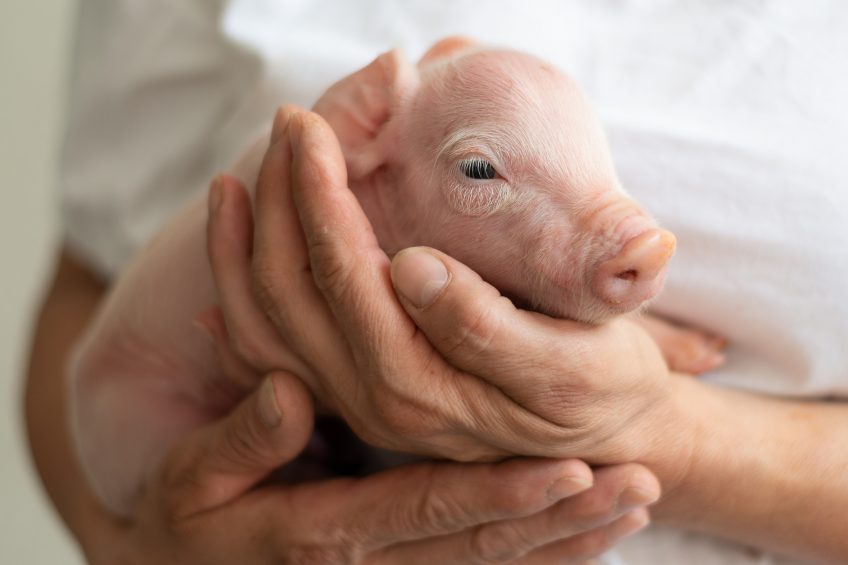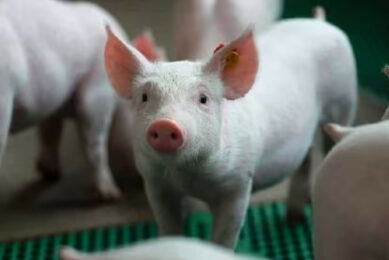A good start is vital for healthy piglets

Raising healthy piglets from start through weaning is a challenge not to be underestimated, impacting performance and health at later stages. Sudden change in dietary regimens and management at weaning puts a heavy burden on the animal’s immature digestive system. This leads to a disturbed immune system and microbiota, and increased susceptibility to diseases.
Stress already starts at birth, a crucial period filled with risks: piglets must be born strong and healthy and remain that way. Once born, piglets encounter several hurdles: piglets suffer from all kinds of pathogenic challenges with an immature immune system. There is a significant and immediate demand on the gut to digest and absorb nutrients efficiently to maintain a high growth rate.
Intestinal epithelial cell integrity is of prime importance considering that this epithelium is responsible for absorption of water, electrolytes, and nutrients. Not to forget the beneficial microbiome that must establish itself as soon as possible to guarantee a fully functioning intestinal tract. Once the piglet could manage these hurdles, another event, considered as a major stressor, takes place: weaning. Although technological improvements in housing, nutrition, and management are available to minimise the stress, piglets are weaned at unphysiologically early ages.
The sudden change in dietary regimens at weaning places a heavy burden on the immature digestive system of the piglet. The gastro-intestinal tract is affected by a change in microbiome, mechanical damage, and inflammation as reaction to the stresses (social, nutritional, handling) of weaning. The effects are aggravated by the immature immune system which has not developed a full response to cope with pathogens, resulting in disease (Table 1). It is clear impairment of the normal gut and immune function, leading to diarrhoea and even death, which needs to be avoided.
Start with the sow
It is not a surprise that a healthy sow has a better chance to farrow healthy piglets. Additionally, the piglets are born with an immature immune system lacking protective immunoglobulins (Ig), as the placenta is impermeable for those proteins. Maternal Ig need to be provided via the colostrum, produced during the first 24 hours after farrowing, and via the milk (Table 2) to the piglet.
The intestinal barrier of the piglet is permeable for those protective immune substances for the first 24-36 hours of life, allowing passage of IgG to the bloodstream. Consequently, the predominant Ig in colostrum is IgG, mainly active in serum, but in milk, the IgA concentration is predominant, protecting the intestinal mucosa of the piglet. It is clear colostrum and milk quality are important for neonatal survival. By improving the immune status of the sow, the quality of the colostrum is enhanced, as transfer of antibody producing immune cells from the blood circulation to the milk is common in sows. Application of the correct vaccination programme against circulating diseases during pregnancy and lactation is a start. Additionally, the immune system of the sow can be optimised using in feed solutions. The beneficial effect of beta-glucans in sow diets is already long time known. But recently a new, effective source of beta-glucans was discovered: an alga, called Euglena gracilis, providing a linear beta-(1,3)-glucan, which has shown to improve colostrum quality in sows (see Figure 1).
Figure 1 – Increased and less variable IgG content in sow’s colostrum by the application of 1 g/sow/day of a dried alga, Euglena gracilis (Aleta).

Secondly, a piglet’s gastro-intestinal tract only begins to establish a microbiota of its own after birth. The primary colonisation comes from secretions of the sow, faeces and the environment. The sow has no influence over which part of her microbiota she passes on to the piglet. A healthy sow with a balanced microbiome can supply large quantities of positive microbiota to her litter. Key here is to manage the intestinal flora of the sow, primarily for neonatal survival. To establish and maintain a positive microbiome as early as possible in a piglet’s life, do not supply a probiotic (e.g. Clostat) at weaning, start supplying it to the sow.
Proceed with the piglet after weaning
It is clear, weaners are suffering from intestinal and immune dysfunctions that can lead to reduced health and performance, increasing the on-farm antibiotic consumption. Identifying causes and targeted (nutritional) approach is of great importance to raise healthy performing pigs. One big advantage of weaning: piglets receive solid feed, which can be supplemented with health improving ingredients. Intestinal integrity is severely affected by weaning. Therefore, supplementation with ingredients supporting the intestinal lining, such as butyric acid (e.g. Butipearl) needs to be considered. Weaners have a limited capacity for digesting protein in solid diets, as they do not have the ability yet to secrete sufficient hydrogen chloride (HCl) to obtain a gastric pH of 3 which is required for conversion of the inactive gastric zymogens into active protein digesting enzymes.
Undigested protein in the gut could lead to microbial growth and subsequently to diarrhoea. Reducing the buffering capacity of the feed with low protein levels and non-buffering calcium sources (e.g. Formyl) and additional free acids (e.g. Acid Lac), can help to assure optimal protein digestion. Using multienzymes (e.g. Kemzyme) will help the piglet digest nutrients and free protein at the level of a more mature animal.
Figure 2 – Managing the immunity gap in piglets.

Bridging the immunity gap (Figure 2) – when the passive maternal immunity is gone and the piglet’s immune system is not well developed yet – is crucial to prevent diseases. Supplying those young animals with an immune modulating ingredient, a beta-(1,3)-glucan from algae (Aleta), can help them to develop their immunity and be more resistant to disease.
Good start, half the battle
To raise healthy piglets, a good start is really half the battle: starting with a proper management of the sow, and proceeding with a supportive strategy in the piglet, anticipating all stressful events in a pig’s life.











